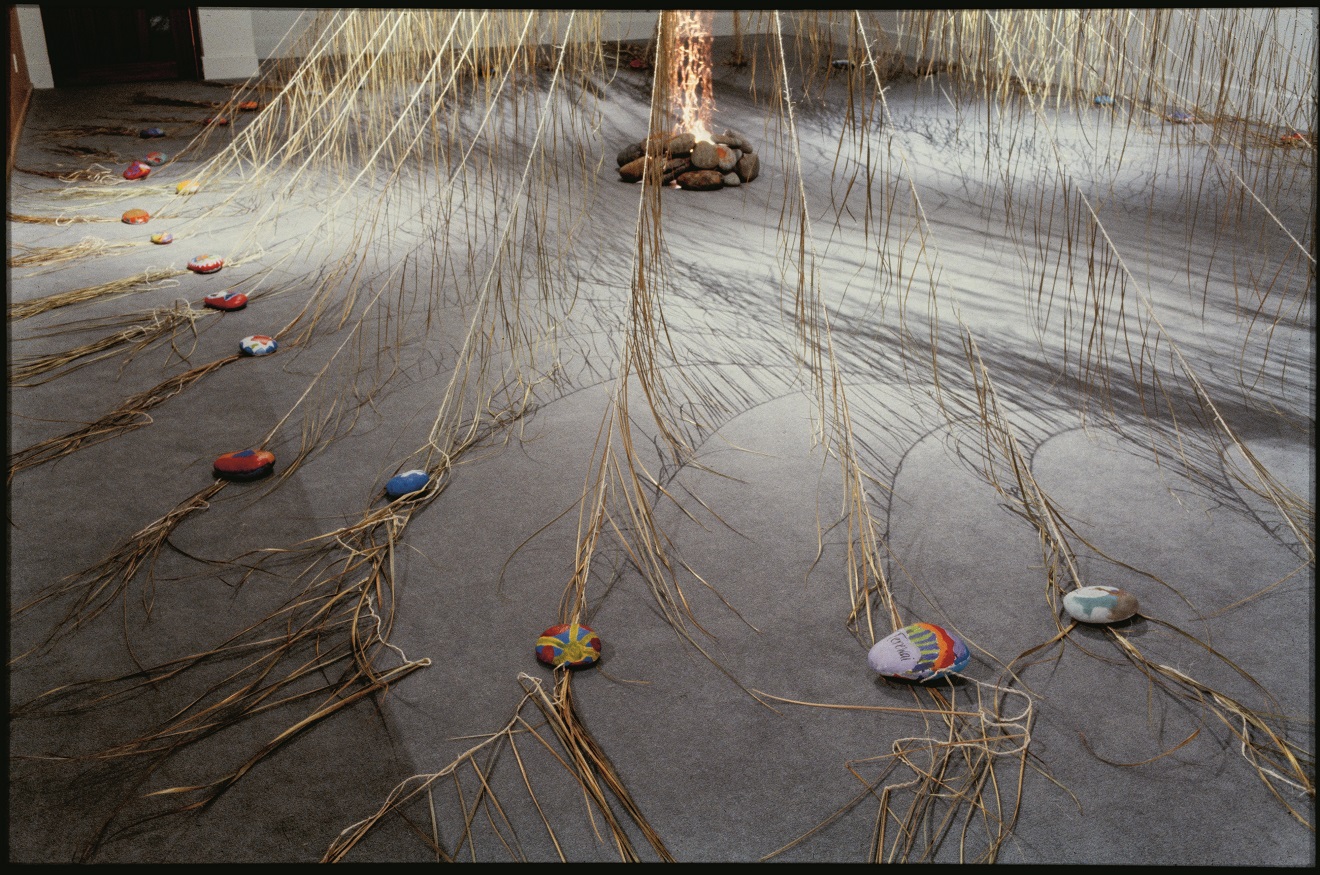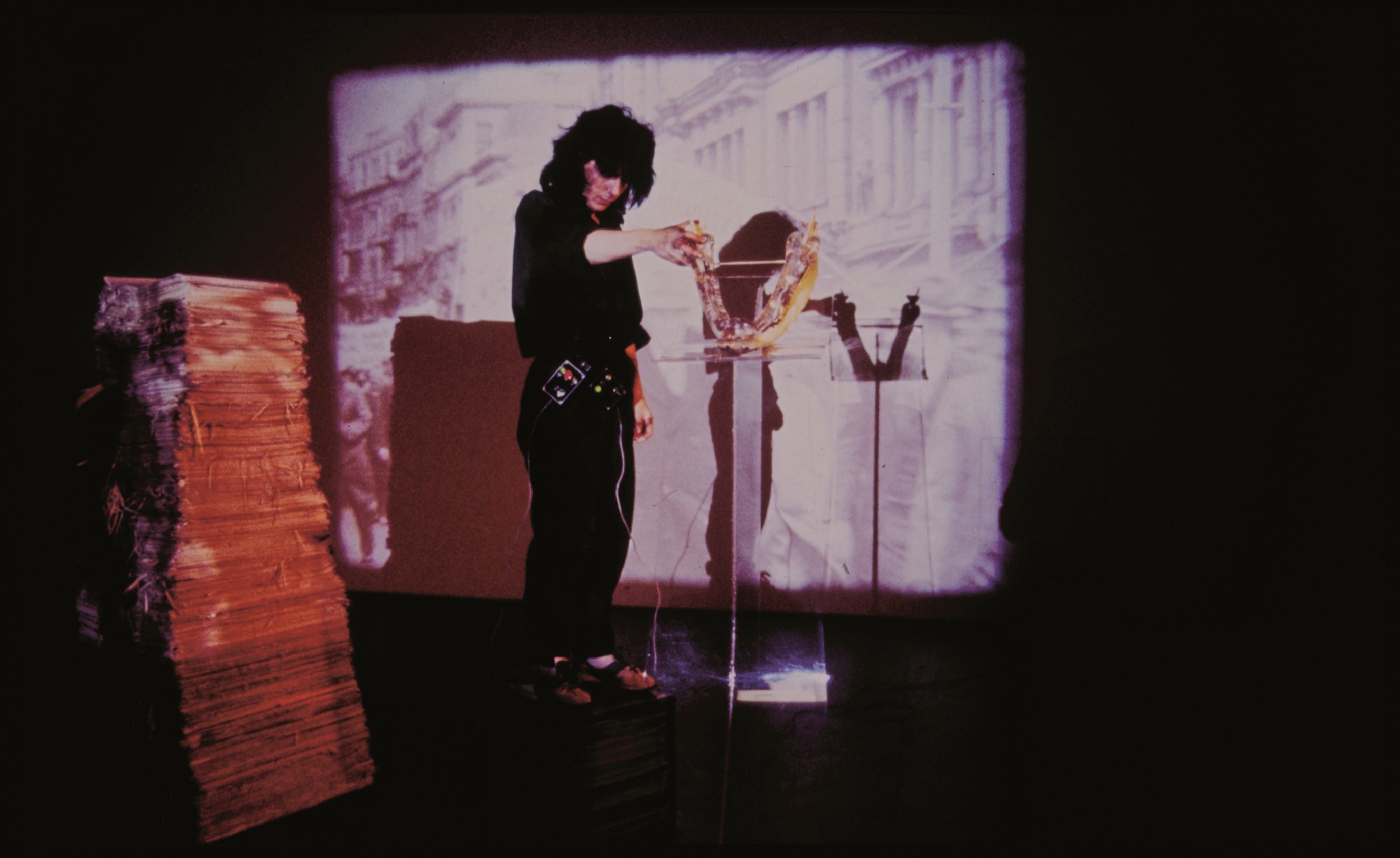
Pouring pints for skiers in a pub in Methven, Kirsty Baker could feel the tug of the arts.
She had come to New Zealand in 2005 after graduating from university in Glasgow, Scotland on a working holiday visa with the intention of staying a year but fell in love with the country and stayed.
"And then after I got my residency, I was just desperate to get immersed back into art again."
So she decided to follow her heart and moved to Wellington to do further study in art history. Back home she studied theatre, having come from a small island off the west coast of Scotland, the Isle of Mull, where the high school only had core subjects.
"I always liked painting and drawing and art itself. But there was no art history in our school. It’s a tiny rural school."
So she took art history as an extra elective in her first year and combined with being exposed to Glasgow’s contemporary art scene she "fell in love with it".
"It may not be the most vocational path to follow but if it hooks you, you’re hooked."
While travel got in the way for a few years, Baker was eager to get back into art and saw it as the perfect way to learn more about her adopted home.
"There’s kind of something magical about the way that art gives you access into a time and a place. Nothing else does in quite the same way, I think."

After completing her master’s at Victoria University of Wellington she moved on to her PhD in art history.
"I really wanted to have a topic that forced me, that just gave me a deep dive into this country’s art history, to learn all I could, to read as much as I could. So I set about looking at the way that women had been written into the art history of New Zealand."
In her research she discovered that while women were written about a lot, it was in a way that gave them a secondary status.
"It was really useful for me coming from outside, like, not having grown up with a knowledge of this arts landscape to really give myself that real grounding."
Knowing that her PhD, as specific piece of academic writing, was only going to be read by a few, probably just the examiners, Baker wanted to continue to think about the ideas and questions it raised but in a more accessible way and in a way that was artist led.
"So the book was a way of kind of telling a history of art-making in this country that was just told through women artists. And the artists were at the forefront."
So she decided to write a book, Sight Lines: Women and Art in Aotearoa, featuring individual essays that focus on single artists, some written by her and others by invited writers Chloe Cull, Ngarino Ellis, Ioana Gordon-Smith, Rangimarie Sophie Jolley, Lana Lopesi, Hanahiva Rose, Huhana Smith and Megan Tamati-Quennell.
"So it’s the artists that lead you through this art history."
There were two ways in which she could have approached it, she believes, either featuring every woman artist with a sentence or two on each or selecting one artist and doing a monograph. Instead she chose a "happy point in between", which has given the depth and criticality of a monograph but with the sweep of history a book listing every artist might have given.
"I think it’s a compromise, like taking the best elements of each of those things. But it’s very tricky and I know there’s going to be people that are like, why wasn’t such-and-such in the book? And there isn’t a good reason I could have kept going."
Deciding which women artists to feature did not come easily. It was a "quite politicised" selection process. Originally Baker was aiming for 25 artists but it "spiralled" out to 35 by the end of the project.
"Oh my goodness, it was very very difficult. And especially when it came to the more contemporary half of the book. There’s so many you could write about, like you could write another hundred books. "

The book is weighted towards the contemporary artist, in part because of where Baker’s interest lies, but also because she wanted to involve artists directly in the book, but selecting them was incredibly difficult.
"So all of the living artists I’ve spoken to and interviewed and they’ve helped shape the chapters or the essays on their work."
The earlier part of the book focuses on more historical figures which was easier as there were some obvious contenders.
"So Frances Hodgkins is there, and Rita Angus is there and then I kind of toyed with not having them there because they’re always present. They’re held up as these two kind of exceptional examples of women artists in this country.
"What I tried to do was write about them in a way that considered their legacy little bit differently, I think. But I really tried to choose artists that aren’t necessarily always the ones that are placed front and centre. So everyone’s heard of Frances Hodgkins and Rita Angus, but maybe not everyone’s heard of Margaret Matilda White, the photographer, unless they’re really interested in photography. And they maybe wouldn’t expect to see Rangimarie Hete sit close to Hodgkins and Angus. You’d expect to see maybe Doris Lusk or, you know, someone of that ilk."
As a whole she describes the collection as an "idiosyncratic and personal story of art-making" because it is the people she particularly wanted to write and think about and whom she thought had something important to say about the way "we think about art-making and the way we think about our relationship to place and to each other in this place".
"But I would love it if someone said no, these are the 36 or whatever artists you should have written about. And I would love for them to write that book. More scholarship is more."
The earlier part of the book also highlights how the centre of arts in New Zealand has shifted over time from Dunedin in the late 1800s to early 1900s to Christchurch in the middle of the 20th century.
"These this kind of little hubs of really creative communities where people supported each other and you kind of allow these little communities of women to flourish in a way. There is also a focus on Wellington as that is where a lot of my knowledge is."
So as well as the obvious Frances Hodgkins-Dunedin link, there are also the more contemporary: printmaker Marilynn Webb, Joanna Margaret Paul and Di ffrench, Ayesha Green (creator of the Octagon sculpture Ko te Tuhono) and Imogen Taylor.
"It’s really nice to draw out those relationships. I really like the echoes. Frances Hodgkins near the beginning and then Imogen Taylor [a Frances Hodgkins Fellow] comes in close to the end."
Taylor’s work during the fellowship really engaged with place, so although she is an Auckland artist she relates to Dunedin in that way.

"It really came through in interviews with people, the number of women that had worked in an educational setting, whether that was in an art school or as teachers or the way they learnt from a mentor or appreciate the process of being a mentor."
This became especially evident during the period called "Māori modernism" and in work in the education system as specialist Māori arts and crafts advisers under Gordon Tovey (1901-74). This was in part due to the difficulty of forging a financially stable full-time career as an artist.
However, there are also other ways knowledge is transmitted outside formal learning institutions, from learning from a mentor to passing on one’s own knowledge.
"So there is a pathway you can trace from Rangimarie Hetet, who taught her daughter Diggeress Te Kanawa to weave, who then taught Maureen Lander, who in turn taught those skills to the Mataaho Collective and their collaborative work — it’s a kind of really beautiful and organic, the preservation of knowledge, the passing it down. It became really evident throughout.
"How much this idea of art ... [is] a way of being able to really honour specific systems of knowledge. People were telling their own stories in the art they were making."
That theme made an impression on Baker. She has recently curated an exhibition, "Memory Lines", at City Gallery Wellington based on the thinking in the book and featuring five contemporary artists considering the relationship between memory, knowledge and art-making.
Another special aspect of the book are the essays by invited writers. For Baker, Cull’s essay sticks out. The teacher and writer who works as a curator at Christchurch Art Gallery, interviewed painter and arts administrator Elizabeth Ellis and sculptor, teacher and arts advocate Mere Lodge.
In her essay she included excerpts from her conversation with the two artists.
"She’s let them speak for themselves and it’s really special. I think actually that that one and in locating this period of, I guess that’s often referred to as Māori modernism. And it has been historicised, but I’ve really been locating it through the lived experiences of these two women, who just had the most amazing time going to art school and are just these powerhouses."
For Baker, having Cull use the artists’ own words showed respect and tenderness for their experiences.
"And it surprised me, I think. It was the really nice thing about inviting eight women to contribute and not telling them what to contribute. Just invited them to speak about what they wanted to write about."

"I probably wouldn’t have thought to include all of them. So it’s really beautiful to be surprised by your own blindspots, I guess."
Now with her book being released, she recognises that while writing the manuscript took 18 months, it is the result of 10 years of thinking and work.
"After that, it is really the result of, I guess, 10 years of research and also building relationships over that time, the artists that I’d met and come to know and have come to trust me enough to to say yes when I invited them to participate."
It is also a book she does not think she would have been able to write the equivalent of about Scotland because it’s much vaster.
"I think that there’s a scope to be more ambitious here in a way than there would be, would have been, in the UK."
Having completed her PhD and book, as well as having her first child, Baker says it has been really nice figuring out where she wanted to be in the arts landscape.
"I really feel that curatorial and writing space is really invigorating and energising. You’re working directly with artists, and I think that for all of us in the arts, it’s quite easy to sometimes lose sight of the fact that artists are the fundamental building block and everything else comes from that.
"So it’s a really nice way of being directly in service of artists. As cheesy as that sounds, there’s nothing else I would rather be doing, you know."
THE BOOK
Sight Lines: Women and Art in Aotearoa
Kirsty Baker, Auckland University Press, $69.99











